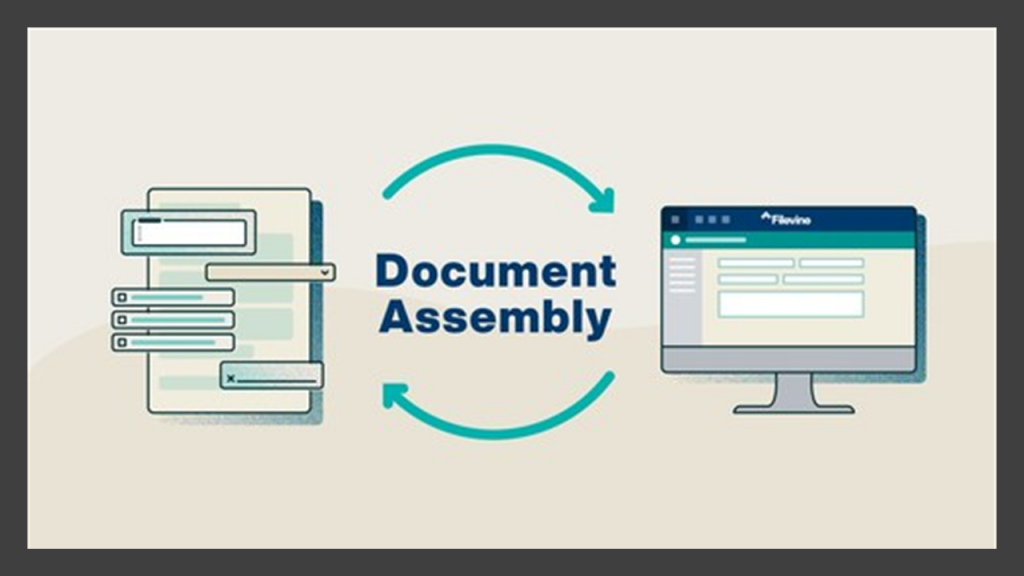
In news that had me checking my calendar to see if it is April 1, the practice management company Filevine says that, as part of a new Document Assembly feature, it has developed a proprietary document format, “.vine,” that it believes will replace Microsoft Word and Google Docs in the legal industry.
“We believe that Document Assembly and .vine will become the new standard in the legal industry, replacing word processors that are ill-equipped for the job,” said Ryan Anderson, founder and CEO of Filevine. “Fundamentally, legal work is about producing and exchanging complex documents. By bringing this task into our platform—and connecting it to all the case data Filevine collects—we’re enabling legal teams to streamline a crucial part of their work.”
Before I tell you what I think about this, let me say that Filevine is a well-regarded product and the company’s CEO Anderson, a former lawyer, has always struck me as a very savvy business leader. Investors apparently think so also, as the company raised $108 million in a Series D earlier this year (after which Anderson was on my LawNext podcast to discuss the deal).
Let me also say that I have not yet directly discussed this news with anyone at Filevine. A spokesperson told me he could schedule an interview for next week.
But I have to wonder whether that $108 million was a fun-money windfall that left the folks at Filevine looking for ways to spend it.
Misguided IdeaThe idea of a single company creating a proprietary document format that it hopes will become the industry standard just seems like a counterintuitively misguided idea for multiple reasons.
- First and foremost, the future-facing approach to document standards is to create vendor-neutral open standards that can be used across platforms and that can be structured using common protocols, such as XML. Admittedly, the legal industry is nowhere near achieving that, but that should be the focus.
- Second, even apart from the open standards issue, there already is a vendor standard that just so happens to dominate the legal industry. That is not to say that a new standard could not come along and knock Microsoft Word off its throne (remember WordPerfect?), but even Google caved to enabling .docx editing in Google Docs.
- Third, companies need to meet their customers where they are, not compel them to learn new formats. Where they are is on Word, and for Filevine to think that its .vine format can become the legal industry standard is hallucinatory.
- Fourth, and this follows from meeting customers where they are, the clear trend in the legal industry, as I wrote recently, is towards interoperability, driven by the notion that so many legal professionals suffer from platform fatigue.
- Fifth, a single practice management company’s proprietary format is never going to become the legal industry standard. That would require one of two things to happen. Either every lawyer would have to move to the Filevine platform, or every competing vendor would have to adopt Filevine’s format. Does Filevine think there is even a remote chance of either of those?
I could go on, and I do not have the benefit of hearing directly from Filevine on why it took this route. But it seems to me that if a company wants to build better document assembly that will become the industry standard, do it on Word.
Based on CLM TechnologyAs for the actual news, Filevine said that this new .vine format was developed to “power” its document-generation tool, Filevine Document Assembly. It builds on the document technology developed by the contract lifecycle management company Outlaw, which Filevine acquired in 2021.
“Document Assembly auto-populates data, clauses and other information stored in Filevine to accelerate legal document generation and ensure accuracy,” the announcement said. “Combined, .vine and Document Assembly introduce a vastly better way to draft complaints, demand letters, interrogatories and more.”
“In 2017, when we set out to create a new word processor and doc format from scratch, we focused on contracts because they’re harder than other legal scenarios in terms of workflow, content structure, negotiation/redlining, permissions and version control,” Evan Schneyer, Outlaw’s CTO and cofounder, said in the announcement.
“We had the sense that if we could solve these problems in the contract space, we could solve them anywhere. And now, the .vine format represents the extension of Outlaw’s market-proven contracting technology to add loads of formatting capabilities that are mission-critical in a broader legal context: firm-specific headers and branding, pleading lines, captions and much more.”
Filevine says its new document assembly tool will allow users to:
- Auto-populate data stored anywhere in Filevine, including names, dates, tables, expenses, company holdings, saved clauses, and more.
- Bidirectionally sync data, meaning that changes to data in a .vine document automatically update data in the Filevine database and changes in the Filevine database are automatically pushed to .vine documents.
- Use conditional logic so that .vine templates adapt to multiple contingencies. For example, conditional logic can automatically change language in a letter to an insurance company based on the insurance type (liability, UIM, no-fault, etc.).
- Make redlines and comments to facilitate contextual feedback and accurate edits.
- Securely store and share documents with clients, colleagues and co-counsel. A .vine can be viewed in any web browser or exported as a docx or pdf.
“It never made sense for lawyers to use the same word processors that middle-school students use to write their first essays,” Cain Elliot, head legal futurist at Filevine, said in the announcement. “With this launch, we’re equipping legal teams with the first document technology that stands up to the complexity of their work.”